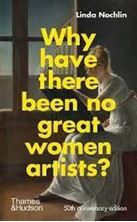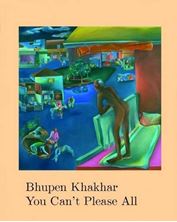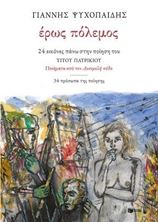Δεν υπάρχουν προϊόντα στο καλάθι σας.
Τέχνη
Why Have There Been No Great Women Artists?
Linda Nochlin's seminal essay on women artists is widely acknowledged as the first real attempt at a feminist history of art. Nochlin refused to handle the question of why there had been no 'great women artists' on its own, corrupted, terms. Instead, she dismantled the very concept of 'greatness', unravelling the basic assumptions that had centred a male-coded 'genius' in the study of art.
With unparalleled insight and startling wit, Nochlin laid bare the acceptance of a white male viewpoint in art historical thought as not merely a moral failure, but an intellectual one. Freedom, as she sees it, requires women to risk entirely demolishing the art world's institutions, and rebuilding them anew - in other words, to leap into the unknown. In this stand-alone anniversary edition, Nochlin's essay is published alongside its reappraisal, 'Thirty Years After'.
Written in an era of thriving feminist theory, as well as queer theory, race and postcolonial studies, 'Thirty Years After' is a striking reflection on the emergence of a whole new canon. With reference to Joan Mitchell, Louise Bourgeois, Cindy Sherman and many more, Nochlin diagnoses the state of women and art with unmatched precision and verve. 'Why Have There Been No Great Women Artists?' has become a slogan and rallying cry that resonates across culture and society; Dior even adopted it in their 2018 collections.
In the 2020s, at a time when 'certain patriarchal values are making a comeback', Nochlin's message could not be more urgent: as she herself put it in 2015, 'there is still a long way to go'. With 14 illustrations
12,50 €
You Can’t Please All
You Can’t Please All is a large, square oil painting on canvas by the Indian-born painter Bhupen Khakhar. To the right of the painting an almost life-size figure of a naked man leans over a balcony and surveys a townscape below him, which occupies the majority of the composition. The scene is sparsely populated and painted in cool blues, greys and greens which, along with the dark sky in the top left corner and the lights in the windows of the buildings, evoke twilight. Two figures and a donkey can be seen together in three seemingly separate instances, which appear to represent the same characters at different moments in time, implied by the difference in scale between each depiction. Elsewhere a man tends to his car and figures congregate inside homes. The balcony wall on which the naked man leans has a large section cut out of it, which, along with the visible interiors of the houses and the car door flung wide, gives the scene a sense of openness, heightened by the aerial perspective afforded by the view from the balcony. In contrast to the scene below, the building occupied by the naked man is painted in warmer reds and pinks, which serves to magnify the distinction between the private realm of the man’s abode and the public world outside.
28,00 €
Έρως Πόλεμος: 24 Εικόνες πάνω στην ποίηση του ΤΙΤΟΥ ΠΑΤΡΙΚΙΟΥ, ποιήματα από τον Λυσιμελή πόθο. Πρόσωπα της ποίησης
Ζωγραφική και ποίηση νοσταλγούν το µέλλον µέσα από µια ταραγµένη νηφαλιότητα, µέσα από µια τρυφερή σχέση ιδιοκτησίας µε τη ζωή, «ληστεύοντας ιδέες» η µία από την άλλη. Σε αυτή την κοινή ουτοπία της πραγµατικότητας, ο ζωγράφος και ο ποιητής, κλεισµένοι αλλά όχι αποκλεισµένοι στους τέσσερις τοίχους, στους τέσσερις στίχους, στα τέσσερα χρώµατα της παλέτας, συνεχίζουν να στέλνουν µπουκάλια απελπισµένης ελπίδας στο πέλαγος έξω, εκεί που «παφλάζουνε τα χρώµατα της µέρας, εκεί που χρώµατα και ποιήµατα ζητούν το τελικό τους καταφύγιο». Γ. Ψ.
από
12,00 €
9,60 €
φίλτρα αναζήτησης:
Καθαρισμός Όλων
Ελάχιστη:
0 €
Μέγιστη:
56 €
€0
€56





